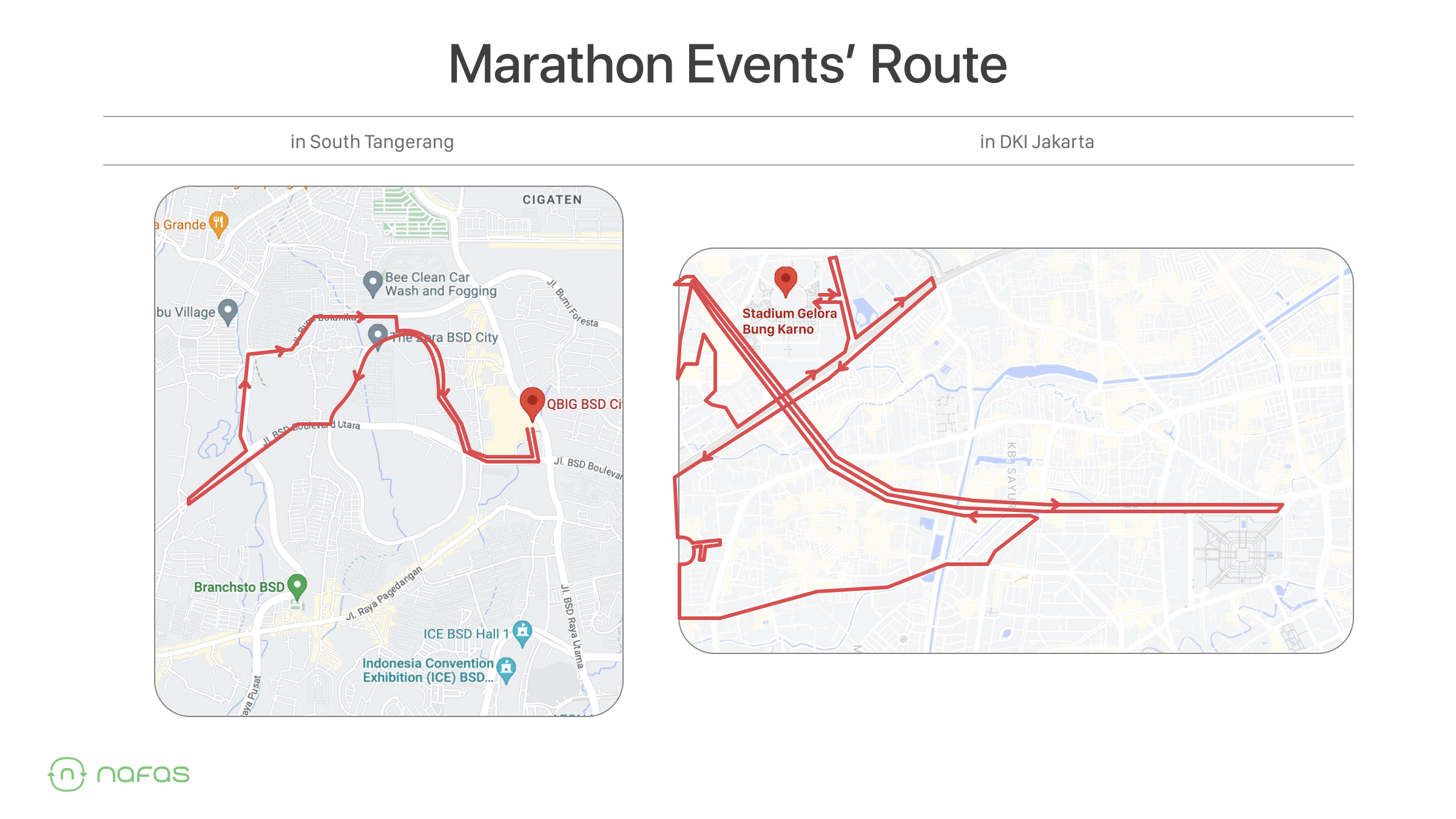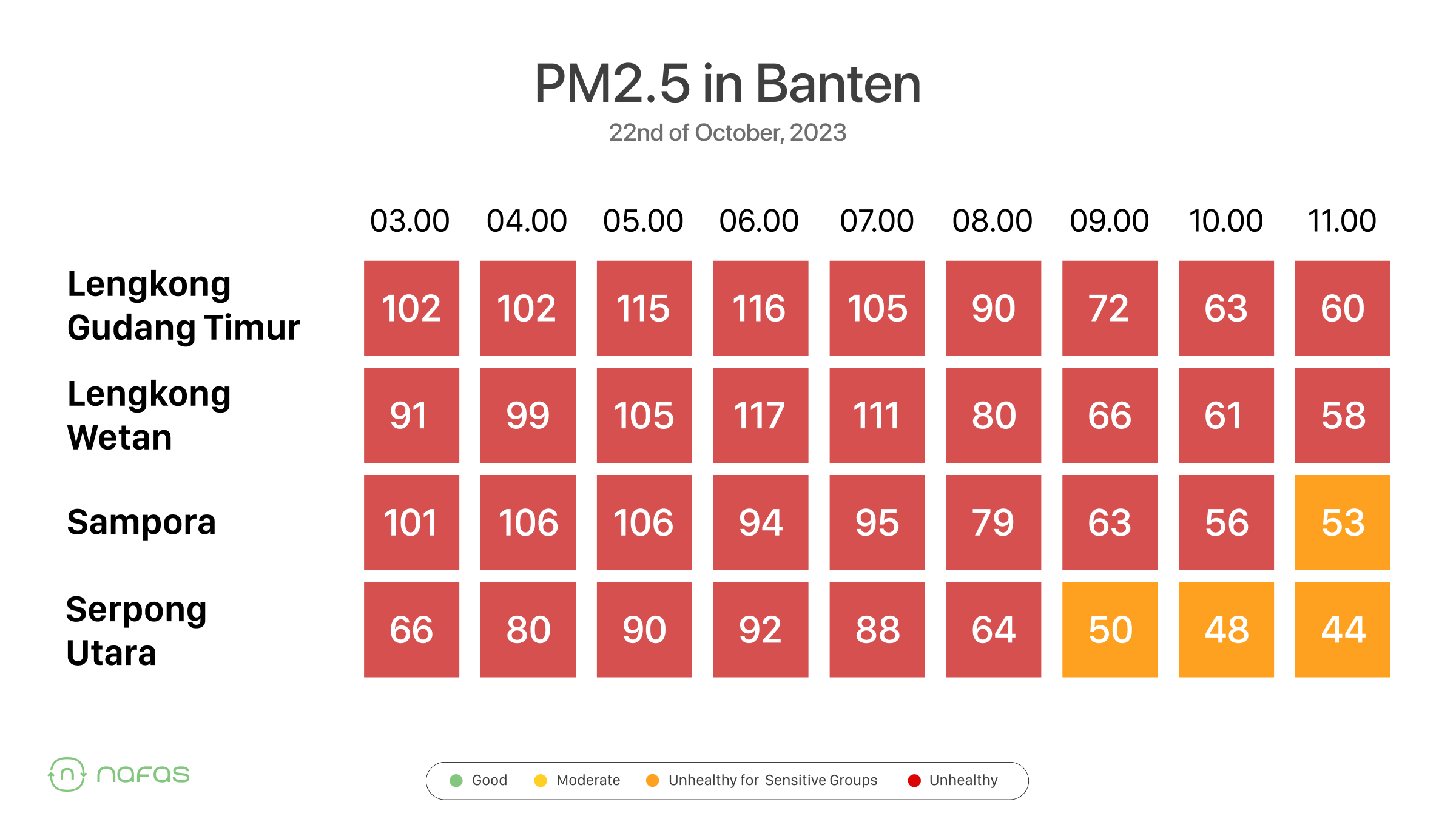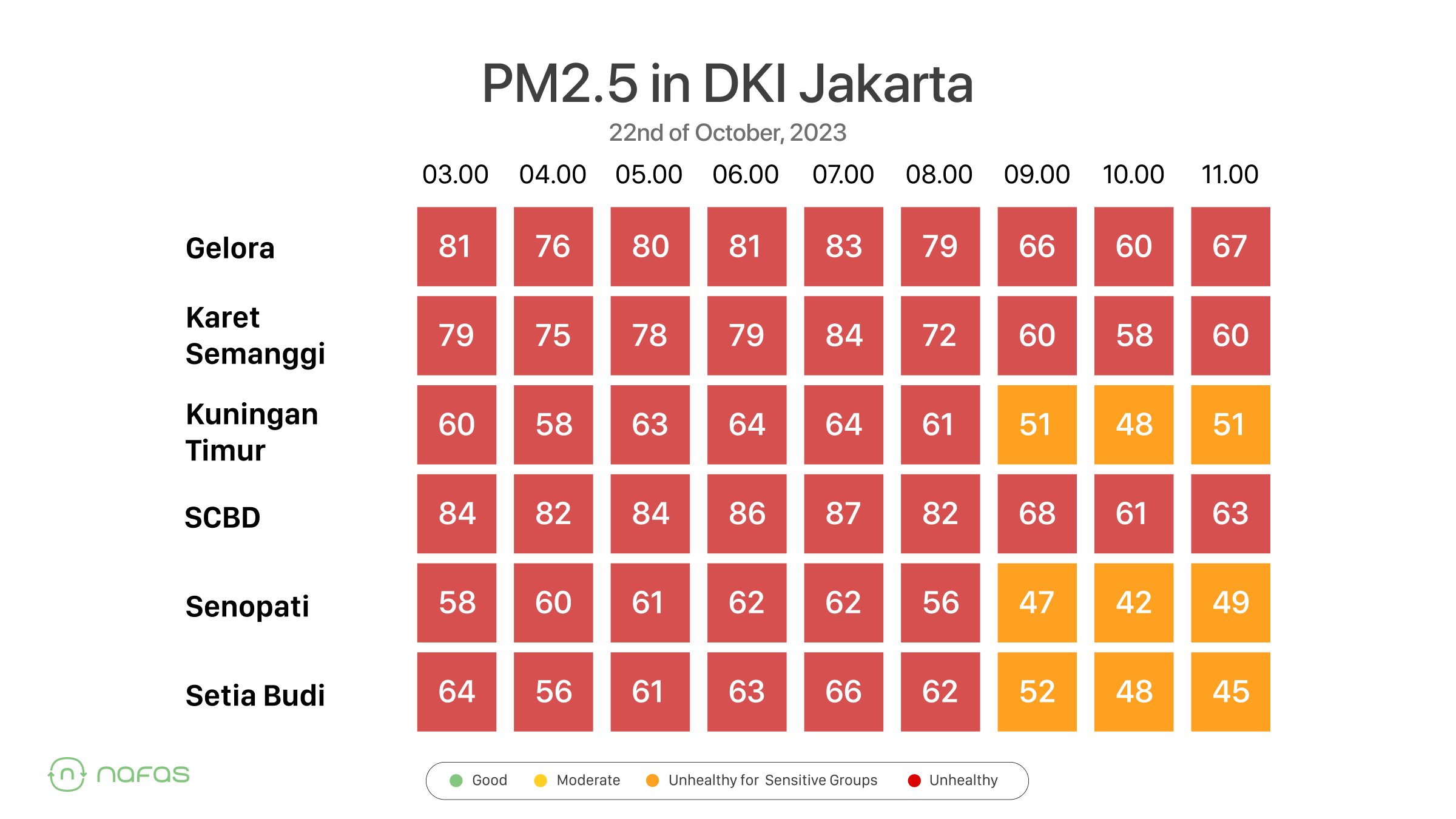Participating in a Marathon During High Pollution: Is it a Health Benefit or Risk?
Last weekend, Jakarta and Banten hosted two major marathon events. Both running competitions took place on Sunday, coinciding with the car free day. Ideally, without motor vehicles, it should mean a pollution-free environment, right? However, data from the Nafas sensor network along both marathon routes showed a different reality. The air pollution remained high from the early morning.
What was the air quality like in both regions at the time? If we continue to run in the marathon despite being exposed to pollution, do we still reap its health benefits? Let's discuss this together.
"Unhealthy" Air Quality Dominated Jakarta and Banten During the Marathon

Nafas sensors along the Banten running route reported consistently high air pollution levels. From 03:00 AM to 11:00 AM, the PM2.5 concentration ranged from 44 µg/m3 (Unhealthy for Sensitive Groups) to 117 µg/m3 (Unhealthy).
The situation in Jakarta was similarly concerning. Out of six Nafas sensors placed along the marathon route, all showed high PM2.5 levels up to 86 µg/m3 (Unhealthy).
High Pollution in the Morning Despite Low Volume of Vehicles: What's the Cause?
Fluctuations in air pollution levels can be attributed to the changes in the Planetary Boundary Layer between day and night. In the mornings, when the boundary layer is lower, pollutants tend to accumulate near the surface.
When Air Quality Deteriorates, Should We Opt for Outdoor or Indoor Exercise?
While exercise is vital for health, doing physical activities outdoors during times of high pollution can be risky. Here are some suggestions from Dr. Efriadi Sp.P(K), Pulmonologist and Respiratory Medicine Specialist, for exercising in less-than-ideal air conditions:
1. Check the air quality before exercising outdoors. Always review the PM2.5 levels. If they exceed 35.4 ug/m3, it's recommended to choose indoor exercise.
2. Adjust the intensity and duration of your workout. When PM2.5 levels are between 12-35.4 ug/m3 (moderate), consider reducing the intensity and duration of your outdoor workout.
3. Choose exercises with a lower risk of pollution exposure. Options like aerobics, pilates, yoga, or swimming require less intense breathing efforts compared to running.
4. To create an optimal environment for physical activity, consider using an air purifier in your exercise space.